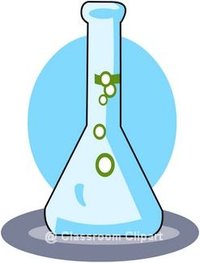Inorganic chemistry
|
|
Categories of inorganic chemical reactions
There are four categories of inorganic chemical reactions: combination reactions, decomposition reactions, single displacement reactions, and double displacement reactions.
Branches of inorganic chemistry
Major branches of inorganic chemistry include
- Minerals, such as salt, asbestos, silicates, ...
- Metals and their alloys, like iron, copper, aluminium, brass, bronze, ...
- Compounds involving non-metallic elements, like silicon, phosphorus, chlorine, oxygen, for example water
- Metal complexes
Commercially important inorganic substances include silicon chips, transistors, LCD screens, fiber optical cables and a great many catalysts.
Inorganic chemistry is based upon physical chemistry and forms the basis for mineralogy and materials chemistry. It often overlaps with geochemistry, analytical chemistry, environmental chemistry and organometallic chemistry.
Organometallic chemistry combines aspects of organic chemistry with those of inorganic chemistry, and is formally defined as the study of compounds containing metal-carbon bonds, although many "organometallic compounds" contain no such bonds. Among the simplest organometallic compounds are the metal carbonyls, in which carbon monoxide binds to a metal through the carbon. Vitamin B12, whose active site is similar to that of haemoglobin, is a naturally-occurring, metabolically-important organometallic compound containing large organic components (corrin and protein) and a metal, cobalt, bonded to carbon.
The range of inorganic chemistry includes both molecular compounds, which exist as discrete molecules, and crystals, whose structures are described by infinite lattices of regularly-ordered atoms and which are studied by crystallography and solid-state chemistry.
See also Important publications in inorganic chemistry
Template:Chem clipart

